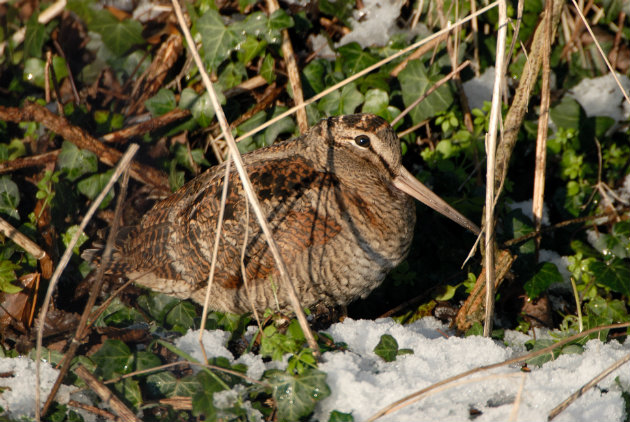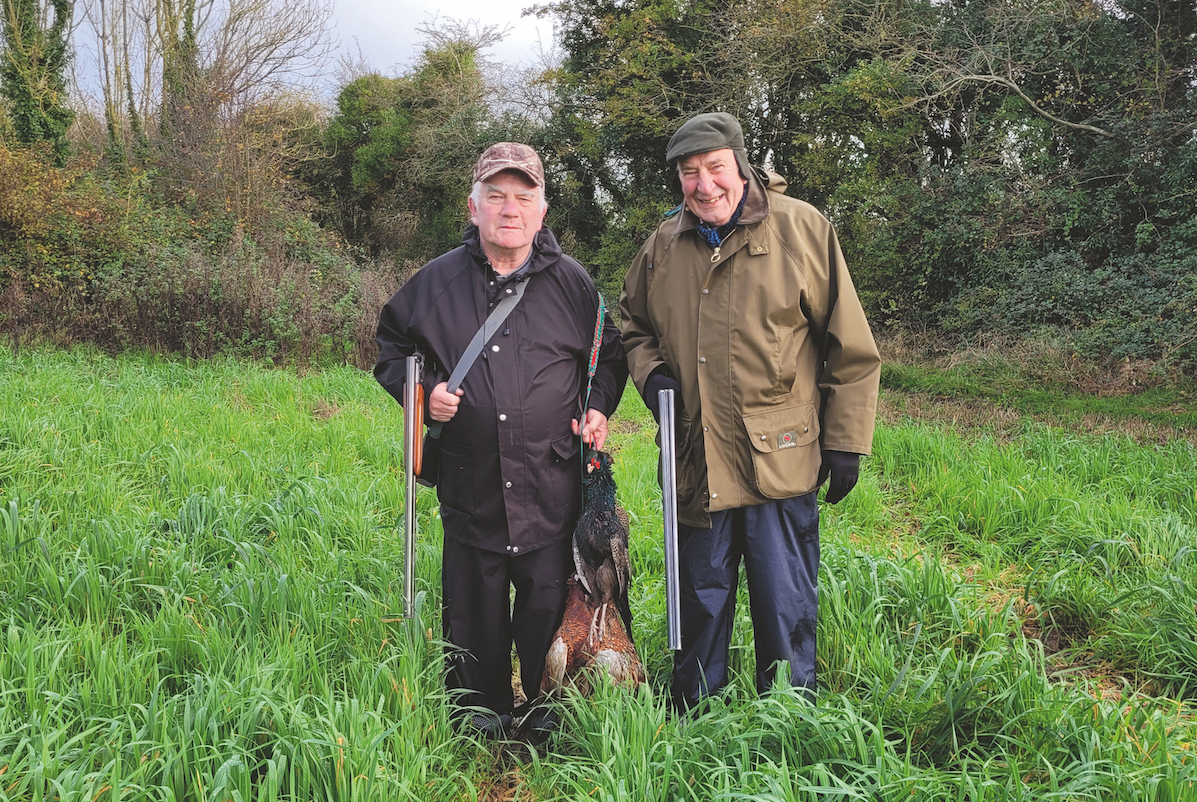The woodcock – so elusive
Richard Brigham takes a close look at the woodcock - mysterious and elusive

The mysterious and elusive woodcock
As both a challenge of shooting skill and a delicacy for the table, the woodcock is regarded by many shooters as an elusive and highly prized trophy. It is certainly one of the most mysterious birds among our quarry species.
Most encounters with this secretive and interesting wader are of the bird on the wing. Disturbed from its daytime resting place, the woodcock suddenly springs up and jinks away in characteristic zig-zagging fl ight, making best use of nearby tree-trunks and other obstacles as a means of confusing predators, including man!
What the woodcock looks like
Seldom is a bird spotted on the ground, its intricately patterned plumage having evolved to blend perfectly with its surroundings, the cryptic mix of reddish-brown upper parts, mottled with black, grey and bu designed by nature to melt effortlessly into any dead bracken or bramble clump, patch of browning sedges or leaf and litter-strewn wood floor. The head is barred heavily with black, the buff-grey under-parts streaked with light grey-brown. Stockily built, both sexes of woodcock appear identical, apart from the slightly larger size of the male. The rounded wings span roughly two feet from tip to tip, and are capable of swift and erratic, almost bat-like flight.
Night feeder
Chiefly a night feeder, the woodcock’s large, light-absorbing eyes are set high on the head to give all round vision, essential for avoiding predators whilst foraging for earthworms and invertebrates. The ears are most unusual, located very far forward below the eye, and a possible aid in locating food. Earthworms, caterpillars, tiny snails, beetles and spiders are taken both on the surface and by probing deep underground with their long, sensitive and quite flexible bills. When comparing long and short-billed varieties, bills can vary greatly in length.
Though feeding habits vary somewhat during the breeding season, the woodcock normally chooses to lie up amongst thick cover during the daylight hours, and unless disturbed, seldom ventures out until twilight to feed on soft pastures and open meadowland, returning to roost at the first faint hint of dawn.

A woodcock’s ears can be found beneath its eyes
Our resident woodcock population
Such secretive habits make an assessment of the British population difficult. Estimates vary widely, but according to the Game and Wildfowl Conservation Trust, our resident population of an estimated 55,000 pairs is supplemented by between 800,000 and 1.3 million that migrate to Britain and Ireland each autumn to spend the winter months – the influx mainly from Scandinavia, Finland, the Baltic States and Russia. Most arrive on favourable nights during full moon in November – often called the “woodcock moon”. Following the arrival of a large “fall” of woodcock, odd displaced birds are liable to be found almost anywhere; exhausted, temporarily disorientated and suffering the effects of the long, unbroken overseas journey.
By late winter the migrants begin to gather along our eastern shores in preparation for the arduous return journey. Though woodcock largely travel alone, considerable numbers can gather while awaiting agreeable weather conditions vital for their success. A sudden storm or squall during a rough sea crossing can cause huge losses amongst wing-weary birds, forcing many of their number down into a watery grave.
Falling numbers
Now quite widely spread, the woodcock was a surprisingly rare bird in Britain until about 1850. Coinciding with the extensive planting of woodlands for pheasant shooting, the woodcock began a steady increase as this favourable type of habitat expanded, supplemented much later by the planting of vast areas of conifer forest in the 1950s and 60s across East Anglia, Scotland and Wales.
While migrant numbers appear to remain stable, our resident population has declined both in range and number by roughly a quarter over the last decade or so.
Though difficult to explain, one factor seems to be the altered nature of available habitat as these forests mature, providing less open areas of low undergrowth and scrub; habitat vital to sustain breeding woodcock populations.
Rising deer numbers, besides displacing and disturbing the birds, browse off many of these areas of shrubby habitat, and a significant reduction of permanent grassland areas alsocontribute to the decline.
In common with other ground-nesting species, increased predation of eggs, chicks and brooding birds by burgeoning numbers of predators, both furred and feathered, has come about as the result of less rigorous pest control.
Do woodcock carry their chicks?
There are many reports of woodcock carrying their chicks, one at a time, apparently clasped between their legs in flight. While this has yet to be proved conclusively, it would certainly enable vulnerable chicks to be moved to a safer or more productive feeding ground.
Breeding
Adults pair up to breed after regular display flights by the male called “roding”; a series of stiff-winged flights along open rides, clearings and wood edges during which he emits a series of croaks, grunts and other strange vocals to a female, either hidden below or sometimes accompanying it in flight. This performance can continue well into the breeding season to both confirm territory and maintain the pair bond.
The nest is a shallow scrape lined with a few local materials where four, creamy white eggs, blotched lightly with grey brown, are laid. Incubated for around three weeks, the well-developed chicks leave the nest soon after hatching, a fluffy mixture of browns speckled heavily with white.
Delicious
The woodcock makes good eating; rich, dark and gamey – traditionally roasted lightly, after plucking, with the guts left intact. The head and neck left on after skinning, with the long beak used to skewer the carcass together. The guts and contents can all be eaten – if desired!
GWCT call for woodcock shoots’ help
Woodcock project seeks participants
Can woodcock tell the time?
Fascinated by the woodcock’s punctuality, Leri takes the time to observe and record the accuracy of these birds’ inner clocks…
The Great Debate: Woodcock shooting
Woodcock: To shoot or not to shoot?











